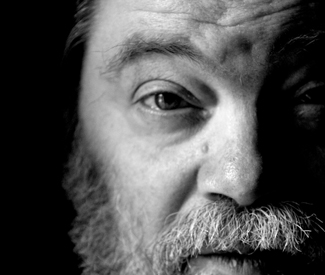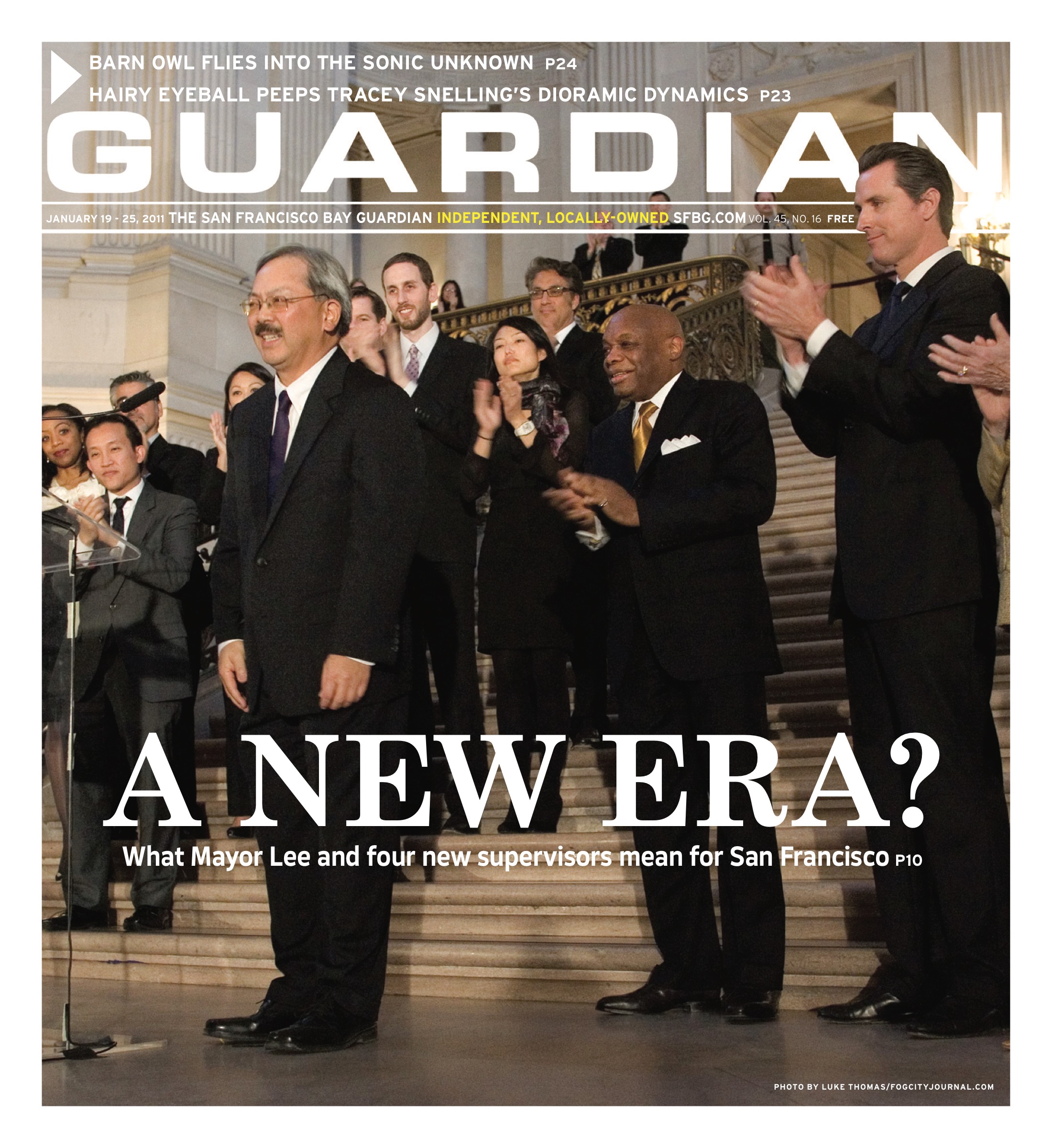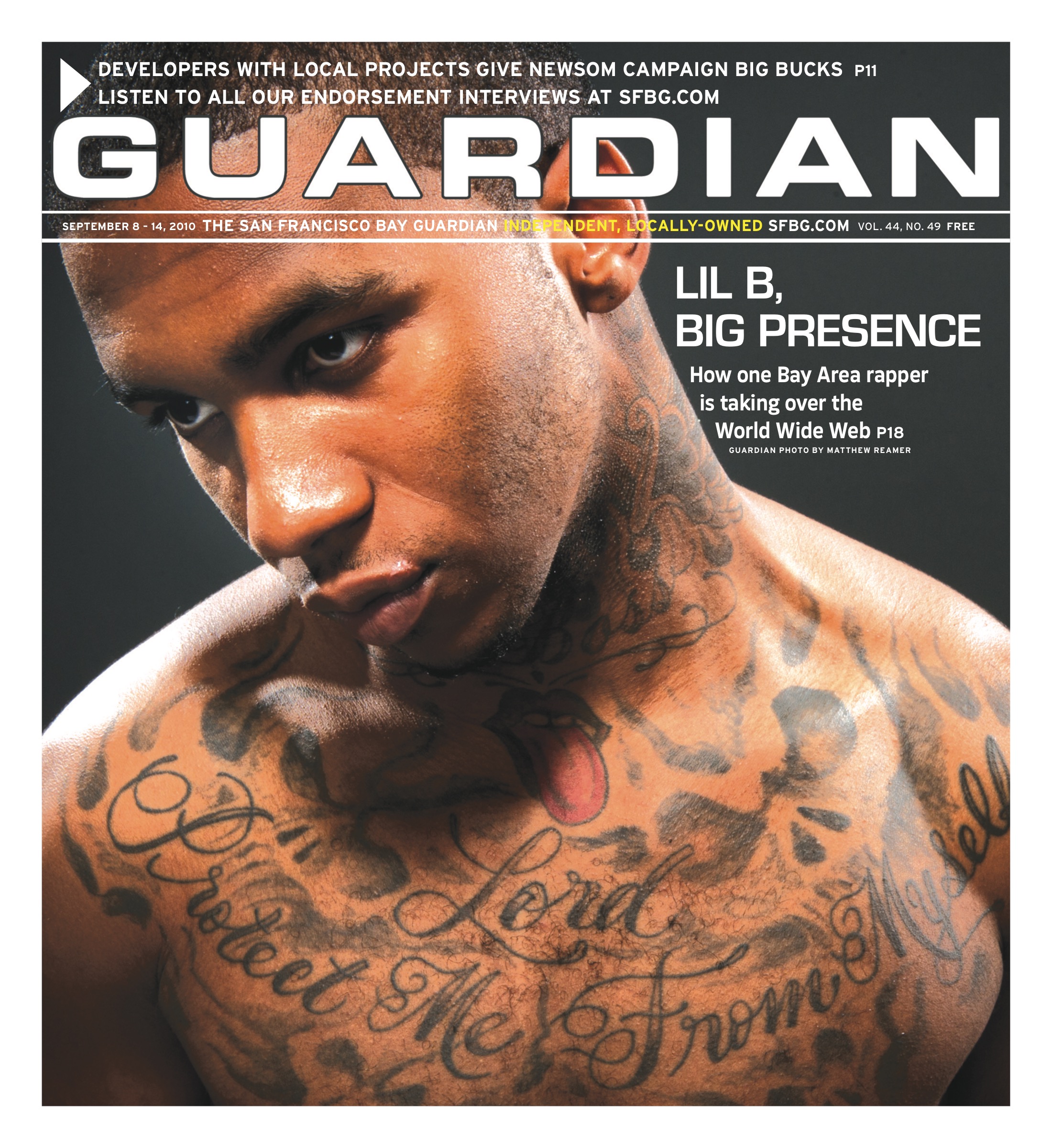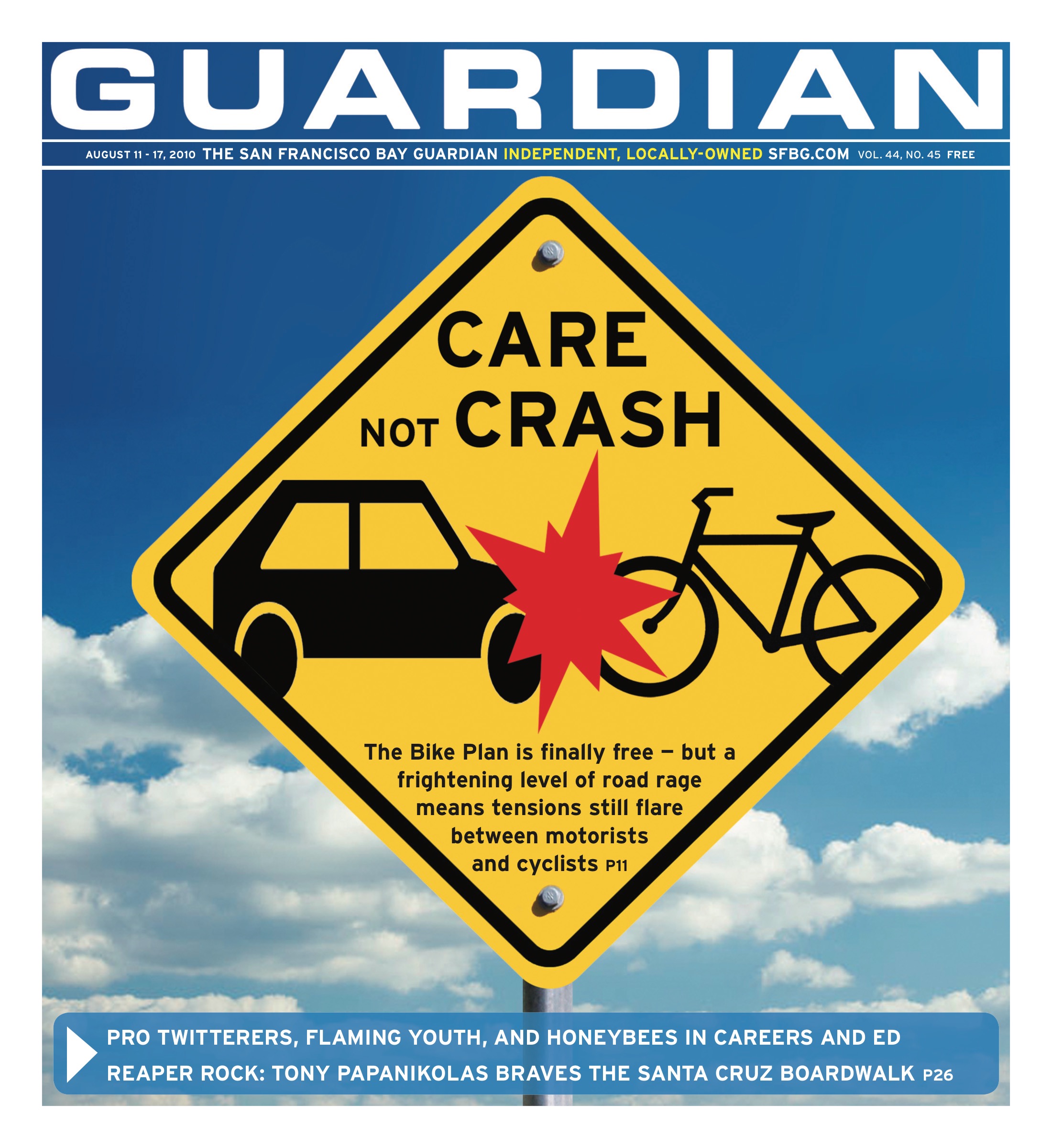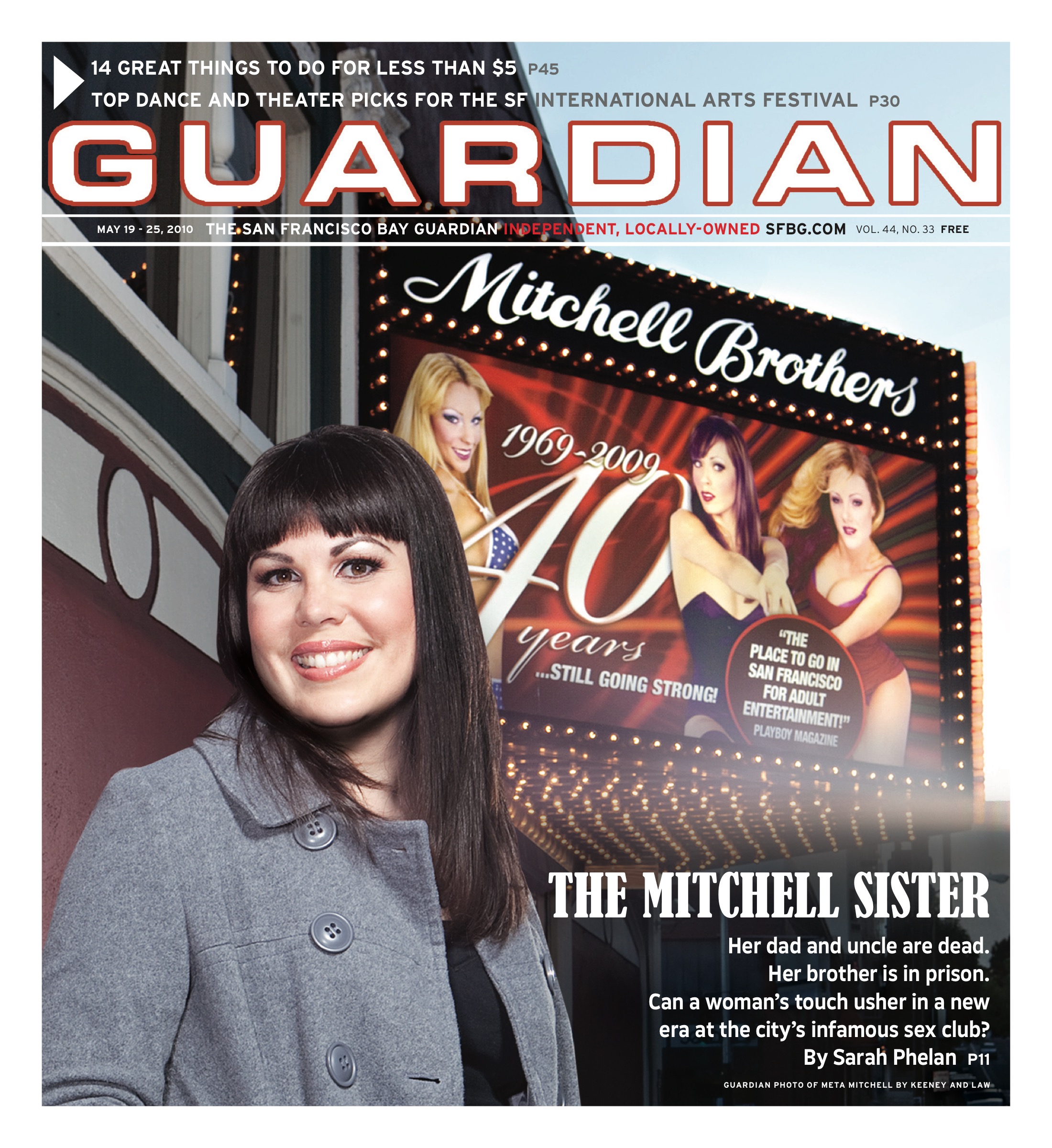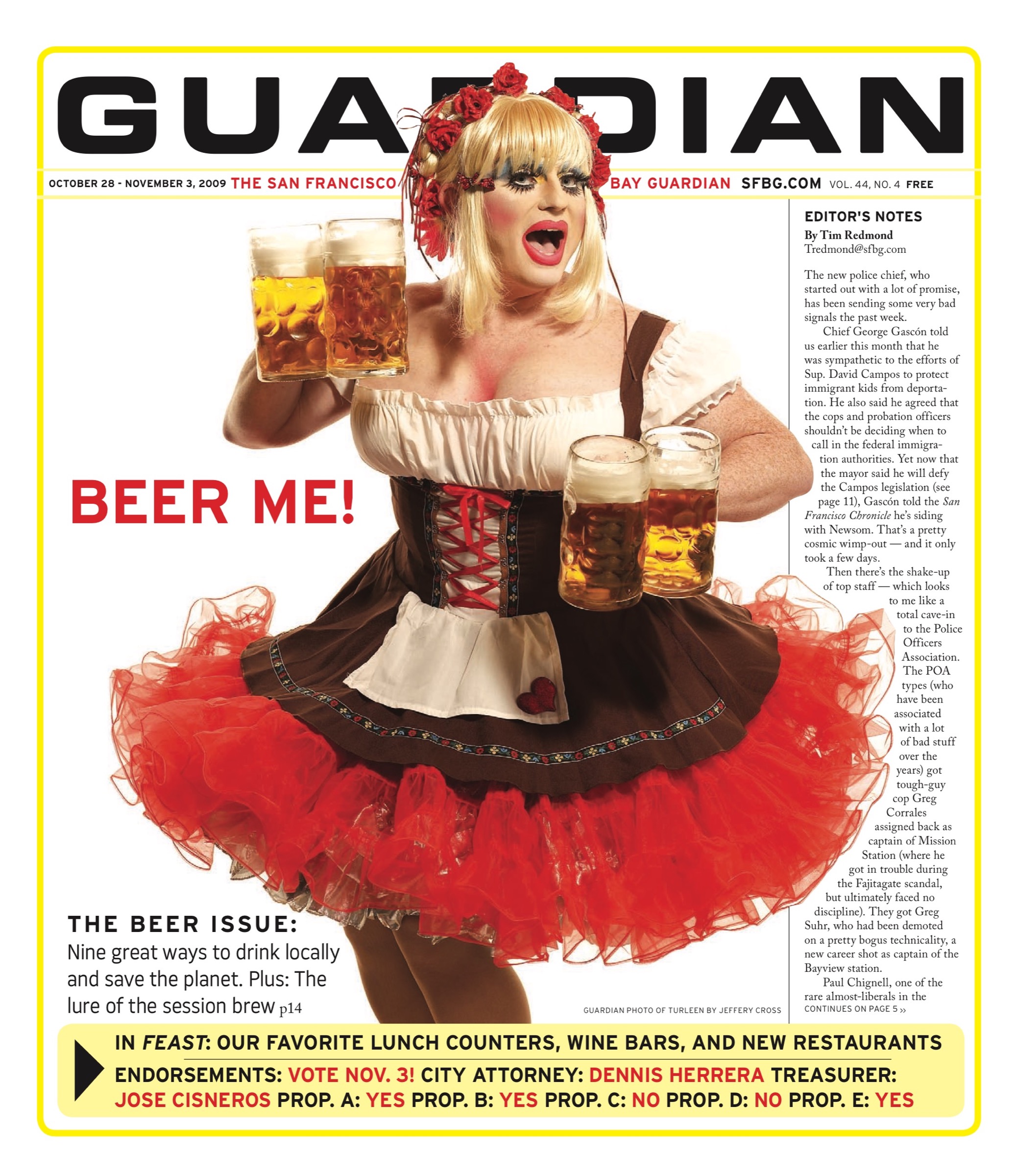a&eletters@sfbg.com
COVER STORY Going to the DNA Lounge during the middle of the day is a strange proposition. But on a Saturday afternoon in late June, the San Francisco bar is filled with a hundred or so people, including, strangely enough, Kris Kristofferson, whose son Jody is trying out a different kind of public career. There’s a smattering of people hanging out on the balcony level, but most of us are pressed against metal guard rails that surround a ring set up in the center of the dance floor. Professional wrestling has, ahem, put a stranglehold on venue, and it’s the middle of the show.
A newcomer with a spiny bi-hawk and spiked shoulder pad named Nate Graves — a muscle-bound cross between a Mad Max 2: Road Warrior extra and the guy from Prodigy — is set to fight "the Mexican Werewolf," El Chupacabra, a local favorite who wrestles in multicolored face paint and prosthetic fangs. Even when entering the ring, both wrestlers’ movements tell a story; the newcomer is stiff and deliberate, a menacing behemoth, while the significantly smaller El Chupacabra darts around in unpredictable bursts.
The bell rings, and the two exchange some preliminary holds and throws before drubbing one another with loud, theatrical strikes. I’m sandwiched between a stylish young woman in her early 20s, noticeably buzzed, and an average looking dude in a Giants shirt. They spend most of the fight leaning over me to hassle each other. The young woman really has it out for Chupy. As the newcomer hoists our protagonist into the air, she screams for the larger man to "drop him on his fucking head."
Wrestling’s harshest critics tend to view it as a theater of violent, regressive, antisocial posturing. But a decidedly gleeful atmosphere permeates the venue. El Chupacabra wriggles out of the precarious position, and the two adversaries call for an impromptu toast in the spirit of the nameless unifying energy that takes hold during a wrestling event.
FOUND IN THE FOG
Fog City Wrestling is a year-old promotion based out of San Francisco. Relatively unknown in the grand scheme of indie wrestling — most of the larger promotions are based on the East Coast — FCW has nevertheless carved out a comfortable niche in the Bay Area, already home to several smaller federations. The promotion may be relatively new, but professional wrestling in San Francisco has a lengthy — if often ignored — history. Fans who grew up in the era of WWE (World Wrestling Entertainment) CEO Vince McMahon Jr.’s homogenized "sports entertainment" empire may be surprised to learn that Northern California as a whole was once home to one of the hottest wrestling promotions in the country.
Throughout the pre-WWE (then the World Wide Wrestling Federation) 1960s and 1970s, promoter Roy Shire’s Big Time Wrestling, a Bay Area extension of the once powerful National Wrestling Alliance, regularly showcased some of wrestling’s big-name stars and future legends, such as local hero Pat Patterson, Superstar Billy Graham, and Rocky Johnson, whose son Dwayne briefly dabbled in the sport of kings as The Rock. Though Shire’s mini-empire extended all the way to Sacramento, the Bay Area was the promotion’s home base. Selling out the Cow Palace on a regular basis, Big Time Wrestling exemplified a halcyon period when pro wrestling was vibrant, gritty, and regional.
Big Time Wrestling owed part of its success to the territorial wrestling industry it existed in, a system where local feds dominated the markets of their particular region. In contrast to the major performers of today, most wrestlers weren’t beholden to a specific promoter, leaving them free to travel the country. But Shire’s own ingenuity was key to his fed’s notoriety.
According to long-time wrestling photographer, columnist, and all-around avid fan Mike Lano, the promoter — a former wrestler — was regarded by his wrestling business contemporaries as a promotional genius. For Shire, personality and a dynamic, athletic wrestling style were paramount. "[He] demanded excellence from his wrestlers," Lano says. "Matches had to be excellent or he would yell and chew the guys out." This democratic booking philosophy, which favored talent and originality over marketability, is closer to the indie wrestling scene of today than to the monolithic WWE.
The Bay Area’s diversity played a major role in Shire’s booking strategy. He promoted wrestlers of color as some of Big Time Wrestling’s top stars, a savvy move that allowed the multifaceted Bay Area to see itself represented heroically in the ring. Afa Anoa’i Sr., better known to wrestling fans as Afa the Wild Samoan, followed in the footsteps of his legendary uncle, "High Chief" Peter Maivia (Rocky Johnson’s father-In-law), who commanded a massive Pacific Islander fan base. Though he was a journeyman by nature, returning to the Bay to wrestle for Shire’s promotion was always a special experience for the Wild Samoan. "Because we [had] a lot of my Samoan population there, sometime[s] [the] fans [would] get out of control and a riot [would] break out in the crowd," he remembers via e-mail. "But it was all good."
This story demonstrates a common truth in wrestling: when the drama in the ring speaks to one’s own experiences and sensibilities, the event as a whole is that much more fun and engaging.
THE POLITICS OF WRESTLING
Fog City Wrestling promoter/cofounder Dominick Jerry started out as a Humboldt County concert promoter before relocating to San Francisco with his wife in 2003. Booking FCW’s matches and storylines, he tells me, gives him the opportunity to play around with the politics of mainstream wrestling, a compelling provisional touch I suspect won’t be on WWE’s agenda any time soon.
Mainstream wrestling is often criticized for its socially conservative slant, a turn-off for many fans whose personal beliefs are less "kill the evil foreigner." But Jerry feels that in a town as singular as San Francisco, a promotion needs to cater to local sensibilities to survive. He cites, among other regional overtures, a handful of appearances by Differ’nt Strokes star Todd Bridges (no doubt drawing from his experiences battling the Gooch) as an appeal to ’80s nostalgia.
Jerry is also interested in the reinvention of character types that a small SF-based promotion would allow for, and quite possibly necessitate. "Wrestling is not a sport that’s very sensitive to race," he tells me over the phone. "But at the same time, it plays on race and it knows it. I see that I have a chance to change things and do things a little different."
He expresses pride in a recent storyline that saw a Middle Eastern wrestler named Sheik Khan Abadi become the promotion’s most popular wrestler, genie pants and all. (Abadi recently relocated to Florida. When I interviewed the East Bay-born wrestler, he fondly recalled his experience wrestling in SF: "They cheered me ’cause they thought I wrestled well and [because] I was wrestling for them. That was one of the greatest feelings ever — to be respected for what I do, and not just typecast for being Middle Eastern.")
The opening match on Fog City Wrestling’s Saturday afternoon card sees your standard square-jawed tough guy face up against longtime California indie star Angel the Hardcore Homo. On the one hand, the persona borders on minstrelsy — it’s a sort of hybrid between the implicit button-pushing of Gorgeous George and lucha libre’s rodeo clown-like "exotico" type. But the match itself tells a less straightforward story. Angel is clearly the hero in the contest, reconfiguring some of the mainstream’s predictable gay panic tropes into a slapstick offensive that plays off his opponent’s increasingly comical discomfort. Toward the end of the match, two teenage-looking guys standing across from me start an "Angel" chant.
On the surface, San Francisco doesn’t seem like the kind of community that goes in for (nonironic) professional wrestling. But scanning the crowd, I notice a sizeable number of bohemian types — an Unknown Pleasures shirt even made an appearance a few shows back. Outside the venue, would they readily admit to their fandom, or at least to their interest in wrestling? Perhaps this insecurity is on its way out.
For a true believer, self-consciousness isn’t a problem. Fog City Wrestling’s Jerry doesn’t see indie wrestling strictly as a subculture. "Everybody knows pro wrestling," he gushes. "Everybody might not admit they like pro wrestling, but everybody does. If it’s on TV, as opposed to Regis and Kelly, you’ll probably put on pro wrestling."
WE NOW RETURN TO THE EVENT, ALREADY IN PROGRESS
When I ask wrestleophile Mike Lano what the Bay Area has to offer that is missing from mainstream wrestling today, he responds with a common sentiment. "They [pro wrestling territories] were all unique. The television was unique, the talent was unique. Guys were not reading promos off a teleprompter or being told what to say by script writers." Fans today may not be getting an entirely comparable experience to the glory days — the DNA Lounge is a long way from the Cow Palace, for one thing. But the spirit of originality Lano remembers from the Shire days has carried over, bringing with it the simple pleasure of watching two colorful characters go at it on a Saturday afternoon.
The main event of Fog City Wrestling’s Saturday bill is a slice of unadulterated pro wrestling traditionalism. Dylan Drake is one of FCW’s marquee stars. He’s a dapper-looking guy with floppy brown hair of a non-threatening length. His name is an alliteration, like Clark Kent. His hirsute opponent has the biblically sinister moniker Malachai, and sports an enormous beard — wrestling shorthand for pure evil.
During a main event bout, there’s a feeling of conclusiveness to everything, like the ghost of Howard Cosell is narrating the action in the crowd’s collective mind. Each punch or hold becomes an ultimate moment that all preceding punches and holds of the show have foreshadowed. This is one of the last vestiges of Big Fight atmosphere, the Ali-and-Frazier effect, or, in keeping with the wrestling aesthetic, Rocky Balboa and Thunderlips. Sure enough, ironic detachment and snarky asides die an undistinguished death amidst the consecrated buzz.
Whether or not the majority of the audience are wrestling diehards, prodigal childhood fans, or just looking for an excuse to drink during the middle of the day, some dormant instinct takes hold as the fight commences. In true wrestling fashion, the match ends in a massive donnybrook of interference and conveniently bad refereeing, postponing the inevitable denouement for another month or two. This is pro wrestling, after all. We head home to a Sunday morning coming down.

